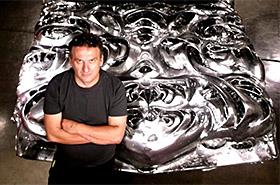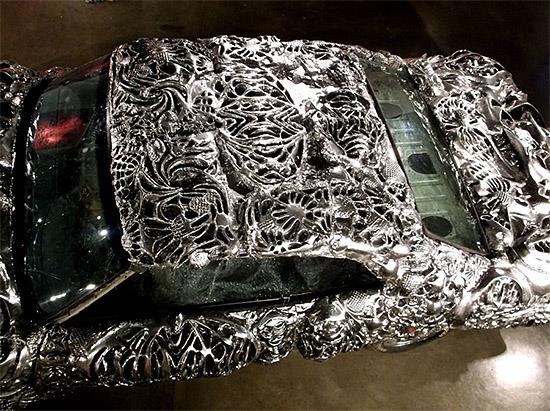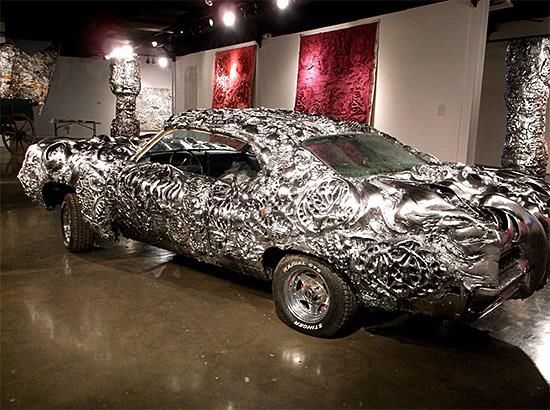 In the old days of "art cars," we saw Andy Warhol's lucid strokes grace a BMW M1 and laughed at all the the flea-market crap Volkswagen Beetle owners glued to their roofs. These days, chrome paint and vinyl wrap jobs have made art cars all too easy -- just look at Chris Brown's "Hot Wheels" Lamborghini or Justin Bieber's leopard-print R8 -- to the point that time-consuming creativity simply isn't needed.
In the old days of "art cars," we saw Andy Warhol's lucid strokes grace a BMW M1 and laughed at all the the flea-market crap Volkswagen Beetle owners glued to their roofs. These days, chrome paint and vinyl wrap jobs have made art cars all too easy -- just look at Chris Brown's "Hot Wheels" Lamborghini or Justin Bieber's leopard-print R8 -- to the point that time-consuming creativity simply isn't needed.But artist Ioan Florea of Shelbyville, Ill., takes exception to simplicity. Born in Romania, Florea invented an entire process to which he assembles symmetrical, plastic resin pieces off a 3-D printer, bonds them using nano-pigments to a car's metal, and then seals them in liquid metal.
At first glance, Florea's Torino looks like it's covered in metallic warts. You could say it's a Frankenstein car, but don't -- Florea hails from Transylvania, the real Transylvania where people buried animal bones in the forests because the Communist government forbade them from eating meat. It was there that Florea grew an appreciation for natural structure and order, later subscribing to the mathematical studies of knot theory and topology -- and big, honking American muscle cars. For a child growing up with his country's homely Dacia (a "very squarish Communist car," he told us over the phone), the muscled Ford Torino was an absolute marvel. And the 1971 model year happened to match his birth year.

It took one month for Florea to complete the Torino, which he displayed earlier this month in a gallery showing at Southern Illinois University. The shapes and textures resemble his portrait and sculpture work, which Florea says are meant to enlarge the structures normally seen in the microscopic world (from our days in high school biology, mitochondria springs to mind) and in other cases, hieroglyphics from dead languages. The bubbled, open shapes are "cut like a section" so the viewer can see what's underneath.
The Torino isn't driveable, at least not anymore. It's now sitting in his studio while his other artwork hangs in an exhibition at the South Bend Museum of Art, located east of Chicago on the other side of Lake Michigan. The real excitement isn't so much the car but the technique, which we still couldn't fully understand and Florea, after some nervous laughter, didn't want to explain.

As an artist and self-made entrepreneur -- he developed and sells a special line of fast-drying paint -- Florea thinks 3-D printing will transform art as we know it.
"With Ford introducing the production line, that was like the second revolution," he told MSN Autos, referring to the Industrial Revolution that occurred several decades prior as the first instance. "Now the 3-D printer is the third revolution."
The phenomenon of 3-D printing, whereby plastic parts can be produced without the use of a hot mold or stamping press, is slowly catching on. Even the U.S. government got a shock when a kit to build a plastic handgun went online. The other possibilities -- instant prosthetics for disabled people, quick-fix parts for appliances, building everyday necessities instead of buying them at Target -- are only starting to be imagined. It's prohibitively expensive and needs a lot more practice, and Florea is only too happy to experiment.
"I don't know if it's going to have a commercial value," he said of his plastic-metallic Torino. "It's just for the artistic value."

Source: MSN
No comments:
Post a Comment